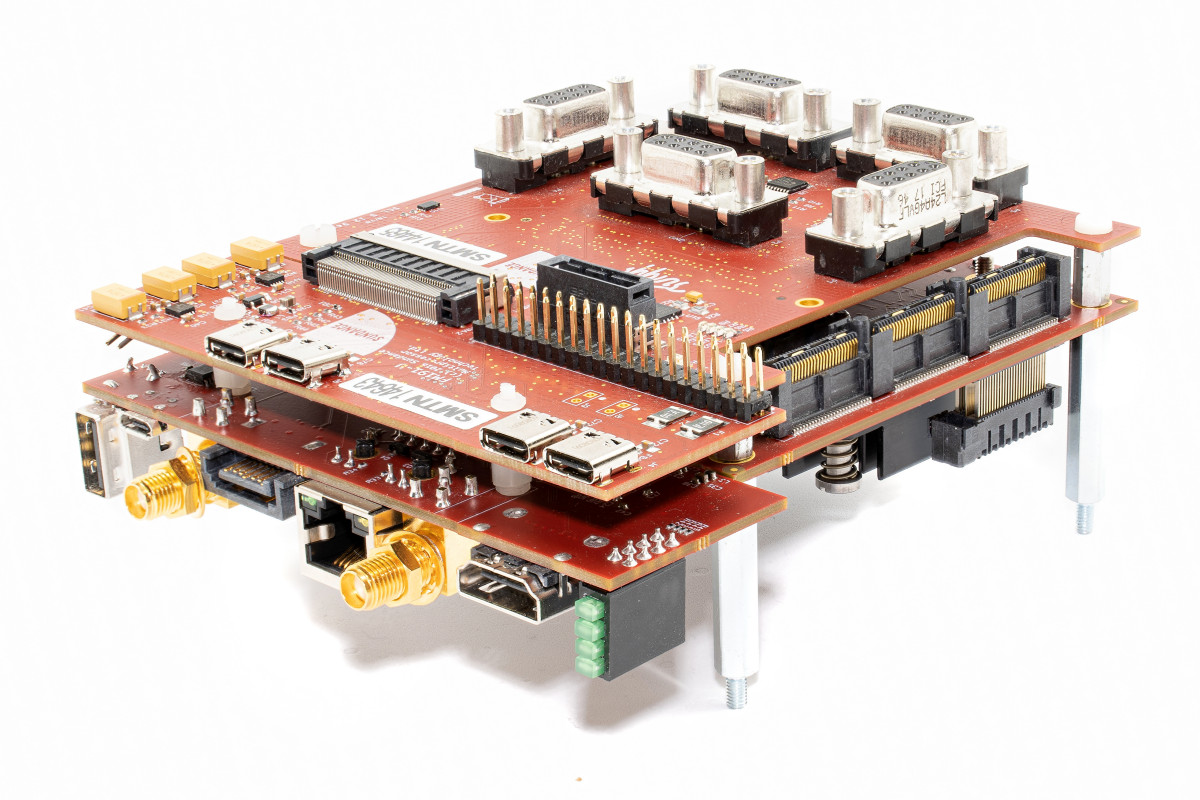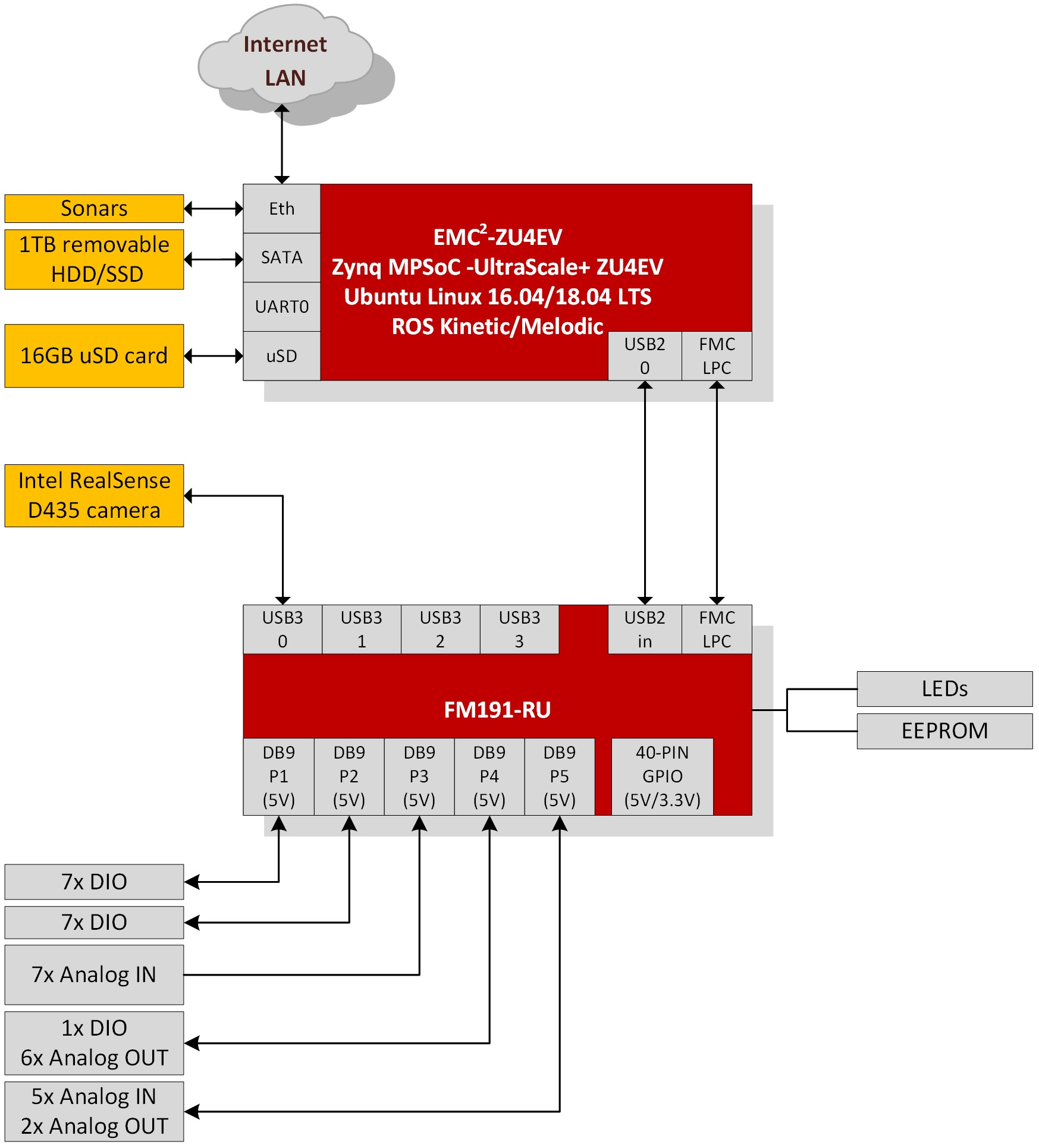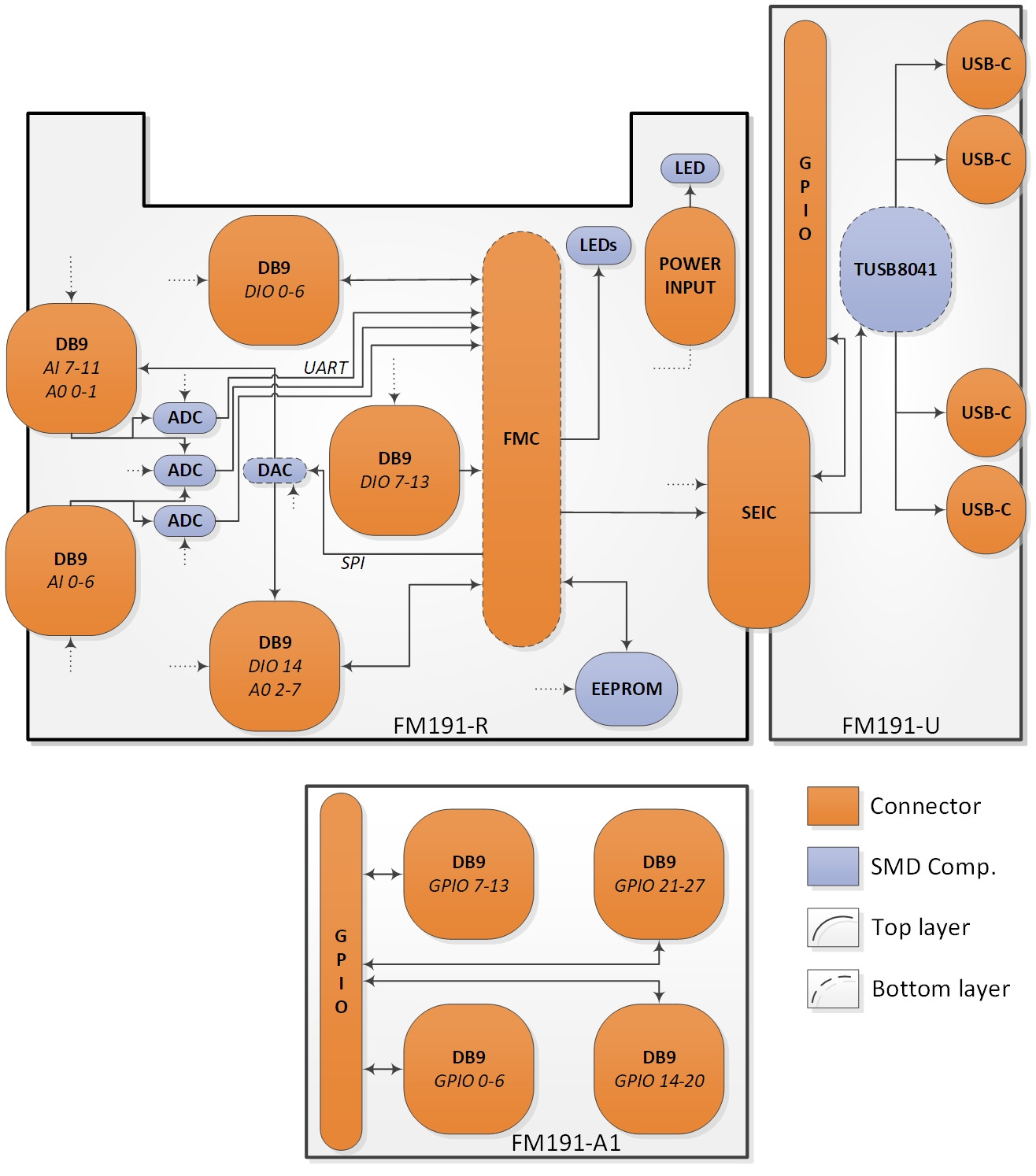Vision, Control and Sensor solution for Precision Robotics
The VCS-1 is a PC/104 Linux stack composed of 2 main components, namely the EMC2 board which is a PCIe/104 OneBank™ carrier for a Trenz compatible SoC Module and the FM191 expansion card that fans out the I/Os from the SoC to the outside world.
The SoC provides standard connectivity (e.g. SPI, RS232, I2C, USB, GigE, PCIe, etc), ARM-based processing which is used to run Ubuntu Linux OS and ROS Melodic, memory interfaces and Programmable Logic used for Hardware acceleration and GPIO. The SoC can either be Xilinx Zynq 7 Series (Dual Core ARM Cortex A9) or Xilinx MPSoC Zynq Ultrascale+ (Quad Core ARM Cortex A53).
A Xilinx Zynq MPSoC is at the heart of the VCS-1 and provides 64-bit processor scalability while combining real-time control with soft and hard engines for graphics, video, waveform, and FPGA acceleration, using a Trenz TE0820 SoM.
Compatible with a wide range of sensors
VCS has multiple USB3 interfaces for interface to different cameras and sensors
- Intel RealSense D435 – Depth camera
- Intel RealSense T265 – Tracking camera
- Stereo Labs Zed Camera – Depth camera
- FLIR AX-8 – Thermal camera
Also, has all ‘typical’ interface to allow VCS to act a like a PC with HMDI display, SATA and Ethernet.
- The ADC can get data from external sensors
- The DAC can control servo-motors
Deep Learning and EDGE AI
The VCS-1 is fully compatible with the Xilinx reVision stack, DPU for Neural Network and AI Inference.
Includes support for the most popular neural networks including YOLO, AlexNet, GoogLeNet, CAFFE, DarkNet, TensorFlow VGG, SSD, and FCN.
Optimized implementations for CNN network layers, required to build custom neural networks (DNN/CNN) = Xilinx NDDDK™
Hardware Compatible:
- Raspberry PI and Arduino compatible
- Compatible with most of the Arduino/RPI sensors and actuators
- 4x USB3.0 ports for interfacing with a wide range of sensors
- MQTT and OpenCV compatible
- ROS compatible
- ROS2 ready
Software supported:
- ROS Melodic – Robotic platform
- MQTT – Machine-to-Machine” connectivity
- OpenCV 4.0.1 – Computer Vision Library
- Python 2.7 and 3.6 support – Scripting Programming Language
- Ubuntu 18.04 LTS – Operating System
- Xilinx SDSoC environment (HLS – ‘C’ to ‘VHDL’)
- TULIPP’s STHEM Toolchain (on GitHub) with Lynsyn Power Monitor Unit (PMU)
- Xilinx DPU for Convolutional Neural Network
The versatility of the VCS system is derived from the modular concept of the SoM processing element on a PC/104 board, combined with a separate I/O Module. This gives it plenty of ADC, DAC, I/O and expansion possibilities with PC/104 options.
FM191-R; FMC-LPC to:
15x Digital I/Os [DB9] 12x Analogue Inputs [DB9] 8x Analogue Outputs [DB9] 1x Expansion [SEIC]
FM191-U; SEIC to:
4x USB3.0 [USB-c] 28x GPIO [40-pin GPIO]
FM191-A1; 40-pin GPIO
28x GPIO [DB9]




